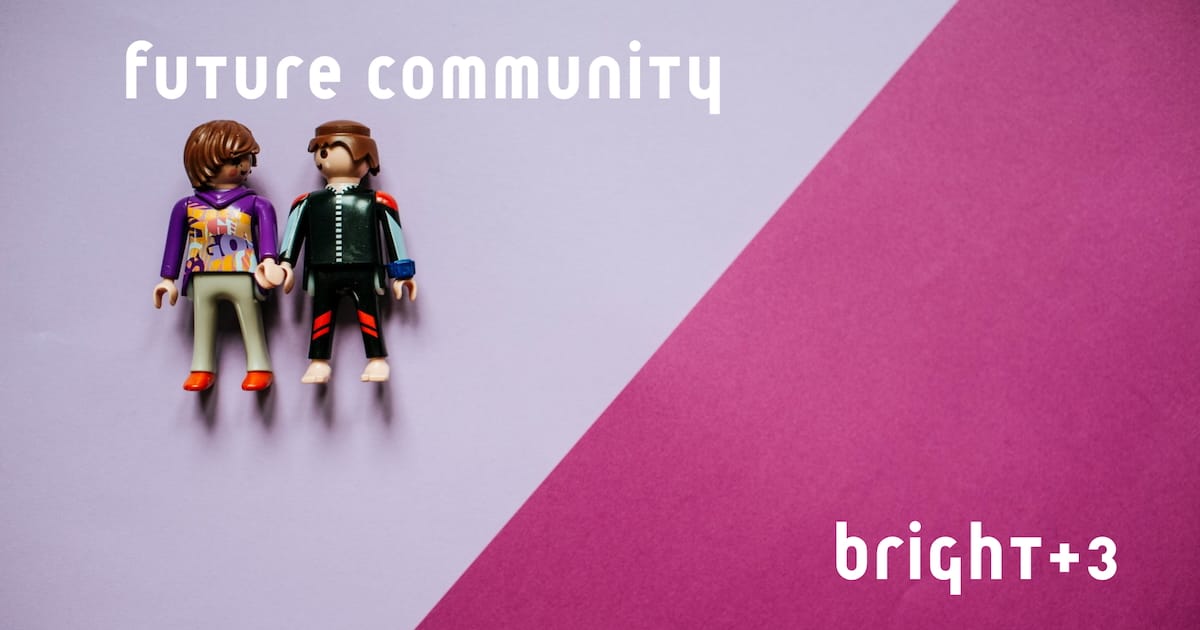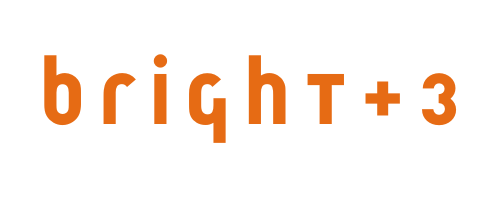Substack is not a strategy, a tactic or even a verb
Five things to think about before you say the word Substack. If you want to have a great newsletter, that is.

👋 Hello. I want to big high five (for those who are into that) to new folks, including Anthony, Beth, Grayson, Jenny, Aaron, Lucy, Kaitlyn, Nicole, Lia, Abigail, Nick, Danielle, Sofia, Kristina and Gabriela.
Thank you for being here, reading, and all you do! Hit reply with any questions, ideas of things to cover, or if you just want to chat.

Be sure to check out the new Future Community Jobs below👇👇
Let's talk newsletters, Substack, and the actual strategy of it all
Substack is a platform. Not a verb. Not even a noun. It is a "proper" noun, I suppose.
Maybe I got a little out over my skis on a post (rant?) a few months ago in a Facebook group of progressive digital tech folks talking about running Substack for organizations.
Here's the full text. Note that it barely touches on the dangerous politics (and anti-author revenue practices) of Substack and its founders–facts that should give progressive and/or good people a lot of pause.
Substack is not a good newsletter platform, especially given beehiiv, Ghost and a million other options. Frankly, platform is one of the least important parts of a good newsletter and most most orgs would be best off using what they already have for email list hosting (i.e. Action Network, Engaging Networks, etc.).
I realize that some of these systems and the way comms and digital teams manage them are obstacles to good newsletters which is often what drives the Substack question in the first place. Set it up on a separate platform to free oneself of organizational rigidity.
One can repost a blog or (shudder) create original newsletter content and perhaps plug into a few of Substack's network effects (likes, restacks). But it is not likely your audience (or target audience) is engaging in Substack's networking tools. Unless you can truly master the content flywheel you’ll be posting into a dusty sub basement where your only visitors are spiders and something that smells suspiciously dead.
Post to Reddit and you'll do better. You won't have good analytics but then again Substack's analytics are crap.
Also, reposting a blog does not a newsletter make. Please reach out or start another thread if you want to talk about newsletter strategy.
Finally, fwiw, Substack is not even remotely progressive as a company. But that's also a whole other thread.
Not sure how the discussion ended because I deleted my Facebook account a few days later.
I want to draw out a few points for communications and content folks who are thinking about starting a newsletter or turning a tepid newsletter into a product that actually works for your organization.
Substack is more or less ok if you’re an individual running a newsletter that’s more or less a blog.
It’s free for you to use, quick to set up and post on and you’ll get some network effects (people can recommend your newsletter and find you as well as like, comment and share your articles). Substack also has tools to collect payments. And tools that help you share across the Substack network (see below).
Meanwhile, Substack (like any third party email platform) is a separate set of data. Newsletter engagement is kept separate from other subscriber/supporter data. And Substack’s metrics and reporting aren’t great.
Don’t confuse platform selection with communications or content strategy.
Substack has features that encourage people to recommend and share newsletters with friends and followers (Restack). Substack also lets you share smaller posts with your subscribers. Similar to tweets (or skeets for the Blue Sky folk).
These features are most useful if you’re already a name brand and/or have a very strong following (perhaps due to having a clear point of view)
Start with a clear idea of the audience you want to reach, what they need, and how they get their information. Chances are your current email list and programs will guide your audience selection. If you want to reach people highly interested in climate policy then understand who those people are and why they are very engaged in climate policy.
Don’t just say “our supporters care about climate” and create content built for that. You need content that is [useful / compelling to a specific part of that audience].
You’re winning two huge opportunities if you can meet the needs of the “highly interested” audience. You’re creating loyal readers or viewers among people who have a reason to engage daily. And highly engaged readers will spread the word. How does a video, book or essay get traction? People who love it spread the word to those who might. It’s the same with newsletters.
Stop thinking about creating keyword rich content. Stop writing blog posts that reformat reports and press releases. And, in the name of all that is still good and joyful in the world, stop sending “newsletters” that are simply monthly recaps of links to stuff you posted last month.
Think about what your audience needs, uses, wants. Have a point of view. Bring stories, data, experiences and answers to their questions. Engage in conversation, learning, listening and not simply talking or press release-ing.
Our communications tools limit us.
Sometimes that’s a good thing. But it’s one reason for lousy nonprofit newsletters. I think simplicity is a big reason why Substack and other email/newsletter platforms thrive. You can plug in an email address, set up an account and start writing. The backend and setup are simple and fast. You get a few fonts, basic color options, you can drop in a photo, and click enter to create a space.
It’s not always pretty. But it works. Meanwhile, organizations have tools that probably require training and/or someone else’s time to set up and use. There’s also branding and design to consider. If you want to start a newsletter you need help building a template which then leads to a series of permissions and approvals.
Our communications planning and strategies limit us.
Sometimes that’s a good thing. But it’s an ever bigger reason for lousy nonprofit newsletters.
Right now, people are screaming for answers. They want to know what’s going on, how it affects their lives and what they can do about it.
Trusted voices can explain what’s going on. But they need to show up and some explaining. Trusted voices can also frame the conversation by giving people language to interpret and describe what’s going on.
If you want someone to show up at a Super Bowl party and be able to talk about, much less explain, how Elon Musk and Trump’s lawless shutdown of USAID, freezing of EPA funding, and declaration of an “energy emergency” are a real threat to public health then give them the language, talking points and tools to confidently have that conversation.
Instead, we’re largely stuck using the tools we already have - press releases and take action emails, fundraising appeals to help “stop this today,” and lots of advertising in hopes of getting someone doing a search to click a link to our site where maybe they might subscribe and someday become a donor. Good luck.
If you want to build an audience then show people you give a shit about them.
To be frank, most nonprofit list and audience building tactics are bait and switch gimmicks. They're petitions and advertisements and SEO built with fear, false deadlines and matches, and keyword optimization.
What's missing is a point of view, a strategy that brings people along, a sense (and tangible markers) of belonging, ownership and identity with you and what you have to say.
You need all that, not a potentially viral content gizmo. Let's spend time together doing that work and giving people words, stories, actions they can believe in, remember, give to and talk about with their friends.
Bright Ideas
We're listening all wrong is a great conversation between Lia Weintraub and Brett Davidson. They talk about listening as strategy, about participation in listening, organizations and democracy. This quote from Brett has me thinking about how we constantly try to boil down storytelling to a single memorable takeaway–what you, dear reader, must do!–when stories and people are more complex than that.
But there's a lot of research also showing that some of the most impactful stories are the ones that are much more complex. People might hear a story and draw different conclusions from it, see different things in it. Many people may find it valuable, even if for very different reasons.
Welcome to USAID Hunger Games! Worst Game No One Wanted. Job searchers (and not just those from the USAID world) may appreciate this post at Career Pivot. [ht Jennifer Haefeli]
Climate change and news audiences report 2024: Analysis of news use and attitudes in eight countries is a January, 2025, report from Reuters Institute that speaks a lot to how people get, want, and perceive climate info. This stands out:
Half (50%) say that they trust the news media on climate change – a figure that has also changed little from 2022 (52%). Scientists are by far the most trusted source of climate change information (74%) as well as the most visible source in news coverage.
America Is Demolishing Antiracism Five Years After the George Floyd Uprisings is a collection of insights from Black organizers, academics, and writers to consider the state of Black politics five years after the 2020 uprisings and with the re-election of Donald Trump.
Some of you may need this: How to leave Substack in 10 easy steps. Hats off to Lex Roman for this guide.
Some truly amazing people in nonprofit strategy, audience development, fundraising, philanthropy and tech for good read this newsletter. Some are hiring. Many are looking for a role. Reach out if you want help finding or filling a role. I have some ideas for you.
Future Community Jobs
Here are 29 roles spotted since last Friday. You'll find the full, updated and much longer list at Future Community Jobs.
Audience, content, journalism and news roles 🗞️
- Executive Editor : New York Amsterdam News [New York City]
- Environment and Health Editor : CalMatters [Los Angeles preferred]
- Managing Director, Storycorps Studios and Brand Partnerships : Storycorps [Brooklyn / Remote possible]
- Senior Energy Reporter : Axios [Remote in the US]
Communications 🗣️
- Communications Manager : Sempevirens Fund [Remote in San Francisco area]
- Community Storyteller : Community Foundation of Central Wisconsin [Stevens Point, WI]
Assorted Nonprofit Roles ⚡
- Chief Executive Officer : Monterey Bay Aquarium [Monterey, CA]
- Project and Events Manager and Engagement and Organizing Director : Move Colorado Forward Initiative [Denver]
- Digital Content Strategist : Showing Up for Racial Justice [Remote]
- Senior Manager, People and Culture : Ballot Initiative Strategy Center [Remote / Washington, DC]
- Events Coordinator : The Communications Network [Remote]
- Director of Programs : TDF [New York City]
- Executive Director : NXTHVN [New Haven, CT]
- Director, Endocrine Disrupting Chemicals and related policy roles : Pew Charitable Trusts [Washington, DC]
- Senior Policy Advisor : Age International [London]
- Managing Director : Poverty Solutions [Ann Arbor, MI]
- State Campaign Strategist : Protect Democracy [Remote in the US]
- Senior Coordinator, Policy and Research : Public School Forum on North Carolina [Triangle Area of North Carolina]
- Senior Program and Membership Manager : Fund the People [Remote]
- Membership Operations Associate : League of Conservation Voters [Washington, DC]
Fundraising and Development 💰
- Philanthropic Partnerships Lead : One Project [Remote / Pacific Time Zone Preferred]
- Digital Fundraising Officer : Freedom from Torture [London]
- Partnerships Manager : Donors Choose [New York City / Remote in the US]
- Head of Philanthropy : Greentown Labs [Houston or Somerville, MA]
Foundations and Philanthropy 💸
- Program Associate, Strategic Communications : U.S. Energy Foundation [Remote]
- Senior Director, New Donor Strategy : Climate Lead [San Francisco]
Agencies, politics, products, projects & more 💻
- Software Engineer : Daisychain [Remote with East Coast US hours]
Future Community is a product of Ted Fickes and Bright+3. Reply or visit Bright+3 for more about our work.


